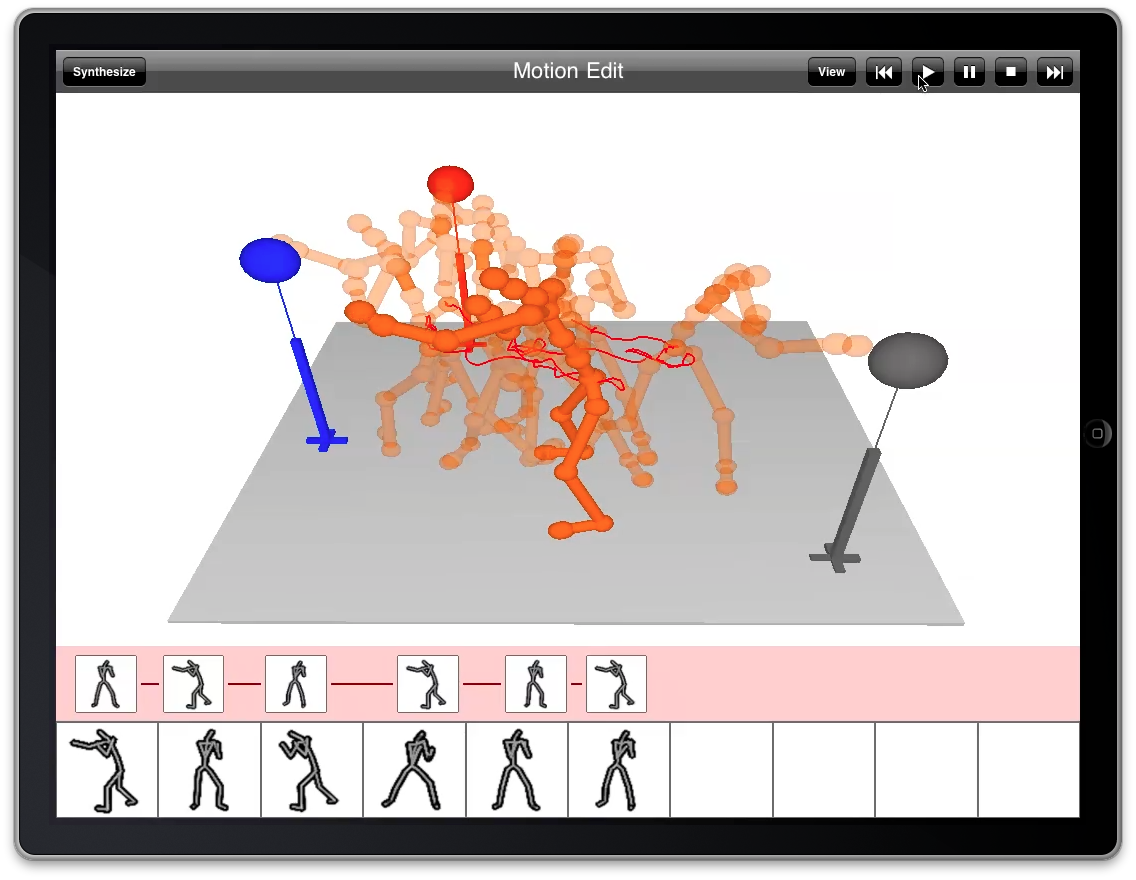Intearctive Build-Up of Animation Sequences with Captured Motion Data
We present a new approach to interactive resequencing of captured motion data that allows the user to progressively extend his/her animations such that each extension can best fit user requirements with respect to space, time, and pose. In the preprocessing phase, captured frames are clustered into pose groups, and inter-connected into a transition graph. For each step in building an animation sequence at runtime, the user is allowed to browse through motion paths in the graph that are connectable to the existing sequence by specifying the desired locations and poses at path ends, and to select one of those paths to extend the animation. Instead of using graph search algorithms, our path browser unrolls the graph locally into spatial search trees and employs an efficient nearest-neighbor search method to quickly find the optimal paths that satisfy user inputs. We demonstrate the usefulness of our approach by creating animation examples in scenarios involving spatial, temporal, and postural requirements simultaneously.
Download
Paper (PDF; 1.8MB)
Video (MPEG4; 18MB)
Publications
Sang Won Lee and
Kang Hoon Lee,
Interactive Build-Up of Animation Sequences with Captured Motion Data, Computer Animation and Virtual Worlds (CASA 2012), to be published.
I M A G E S
Path Browsing
In order to enable the user to adaptively compromise between his/her intention and the allowable range, we provide the user with a functionality of quickly browsing through a large number of connectable paths. Specifically, whenever the user points to a new location to be examined, our path browser immediately responds by displaying an optimal path whose end is the nearest to the input position. The responsiveness of this interaction cycle is maximized by unrolling the motion graph into a spatial tree for each new pose, and then running a nearest-neighbor search for each location query (instead of graph search).
Boxing
We arranged three punch targets of different colors at arbitrary locations, and specified an animation scenario requiring the character to approach and throw punches at those targets in a specific order. To confirm whether each target was hit or not, we changed its color to gray if its distance from the character¡¯s hand became less than a threshold distance, about half of the character¡¯s arm length. The user was able to quickly link available motions together to satisfy the given requirements in a few minutes, while flexibly controlling the complexity and length of the intermediate motions between each pair of successive targets as intended.
Breakdancing
As in the boxing animation, we placed three targets of different colors at arbitrary locations on the floor, and required the character to bend its body to touch its toes at the target locations as if trying to pick up the targets. Because the variation of the poses were more wide and dynamic than with the boxing, the frequency of allowable transitions between similar poses became lower, producing the longer motion intervals associated with graph nodes in average. As a result, the motion paths available in our search trees were generally very complicated and sparsely distributed in the space, which makes precise control over animation sequences challenging. However, the user successfully achieved the goal through a few number of trials and errors with the help of our location-based browsing interface.
This page is maintained by Kang Hoon Lee, and last updated at May 20, 2012.


